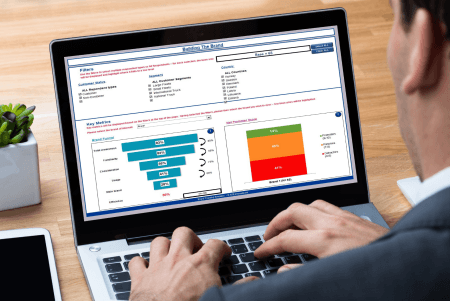
There is no doubt that the Net Promoter Score (NPS) is a key performance indicator for most businesses these days and this trend is likely to continue. In the past 5 years there has been a growing number of corporates using this metric as part of business reporting to various stock markets. The score is being embedded into business globally, however, is using the NPS score to financially reward employees a good idea?
Unlike overall satisfaction which measures the past and the present the NPS is intended to be a future gazing metric to establish the future loyalty of customers. In principal a statistically significant increase in NPS should also result in improved financial business performance. It seems to be an appropriate metric to use in theory but in practice it is not always that effective and often results in employees chasing a number as opposed to motivative employees to do what they should be doing, providing world class experiences.
One of the pitfalls in using NPS to incentivise B2B employees is that unless you are speaking to the decision makers for the product or service, then the score doesn’t measure company loyalty. In the past few years there has been a rise in pulse surveys where customers will receive a survey after interacting with a business i.e. receiving a survey after they place an order. Tasks like these are often fulfilled by operational staff as opposed to those who are part of the decision-making unit. This often creates unrest amongst employees when they see scores coming in from those who do not necessarily have a direct say in the final decision to use a supplier. Pulse surveys also result in customers only thinking about that one interaction when really, we want a more holistic review of the experiences of dealing with the business.
Another thing to bear in mind is the size of your customer universe as sampling is a very important element in the reliability of an NPS score. To avoid volatile changes, we recommend only calculating an NPS score when there are at least 400 responses. Even at this level of sampling the NPS had a confidence interval of +/-9%. To reduce the confidence interval to +/-5% the overall sample size would need to be three times larger. Results are therefore often not statistically reliable, particularly in businesses where an NPS score is assigned to an account manager or region. Furthermore, when tracking data over time with a small sample size, scores can differ dramatically even though only a small number of scores might change.

Another thing to consider is whether you are setting realistic targets for your NPS. From the five hundred plus NPS studies B2B International has conducted over the years, the average b2b NPS has been calculated at +33. Those that achieve best in class scores can score between +60-70. However, moving the score up by more that 5 to 10 points a year can be very tricky particularly when you are already achieving an above average NPS.
It is also worth taking into consideration the objectives of the business when deciding how to financially incentivise. If customer experience is a key differentiator or key business goal then by all means use NPS but if business growth is important or thought leadership, your incentive might also want to cover the number of new customers and the number of articles that have been written that year. It is crucial that any bonusing in the NPS meets with the direction the business wants to go in.
Put simply should you financially incentivise employees on NPS? Yes, I think you should. However, be careful in the way you do it, remember you want to encourage employees to focus on customer experience rather than searching for loopholes in ways to manipulate scores. Bonusing on NPS works best when it is done as part of a team and not done on an individual level. Culture is crucial so getting everybody pulling in the same direction will have the greatest positive impact in the long run. I would also recommend using a compound metric which covers all the business goals as opposed to just measure customer experience alone.


